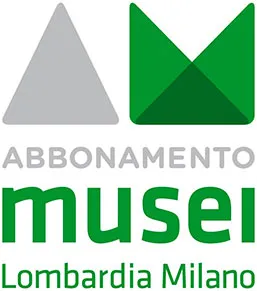Lavagnone and the Garda area pile dwellings. The first floor of the museum is entirely dedicated to the pile-dwelling phenomenon: villages, craft activities, agriculture, breeding, hunting, fishing...
Reconstruction of the interior of a Bronze Age hutThe exhibition on the first floor is divided into three rooms and the cloister. The exhibition is accompanied by full-scale reconstructions and multimedia supports. This floor also houses the study room and the curator's office.
Room1: entirely dedicated to the Lavagnone site (Desenzano/Lonato, BS), illustrates the history of the site from the foundation of the first pile-dwelling village (2067 BC on the basis of dendrochronological dating) to the last phases of occupation in the Late Bronze Age (c. 1350-1100 BC), when the huts were built on the now dry ground.
In this room, one of the excavation sections of Lavagnone has been reconstructed in full scale and a special space has been set aside for the wooden pirogue found during excavations by the University of Milan in 2008.
The room also houses a reconstruction of the interior of a Bronze Age hut.
Room 2: dedicated to the many craft activities carried out by the inhabitants of the pile dwellings: not only pottery, but also metallurgy (on display here is the Remedello hoard, the oldest hoard from the Early Bronze Age, found in February 1921 in Remedello-Brescia), woodworking, stone and flint work, weaving...
Harvest knife (Lavagnone pile dwelling)
Sala 3: here the Lavagnone plough is on display, to which several educational panels, an 'immersive' display and an interactive carpet are dedicated..
In the same room, a showcase is dedicated to the harvest knife from the Mosconi collection: this is a complete specimen of a tool used for harvesting, with a wooden handle and flint blades, .
Harpoon fishing
Cloister: dedicated to the other pile-dwelling sites in the Garda area and the activities related to food production in the pile-dwelling era.
In most of the pile-dwelling villages, agriculture and animal husbandry were the main ways of obtaining food. Alongside this, there was also the gathering of wild fruits (hazelnuts, cornelian cherries, acorns...), fishing and hunting.
The food showcases provide an insight into agricultural techniques, the animals bred, the tools used by the pile dwellers to hunt and fish and the preparation of food.
A space is also reserved for the exhibition initiative “Dai depositi del Museo: COSE MAI VISTE!”.








